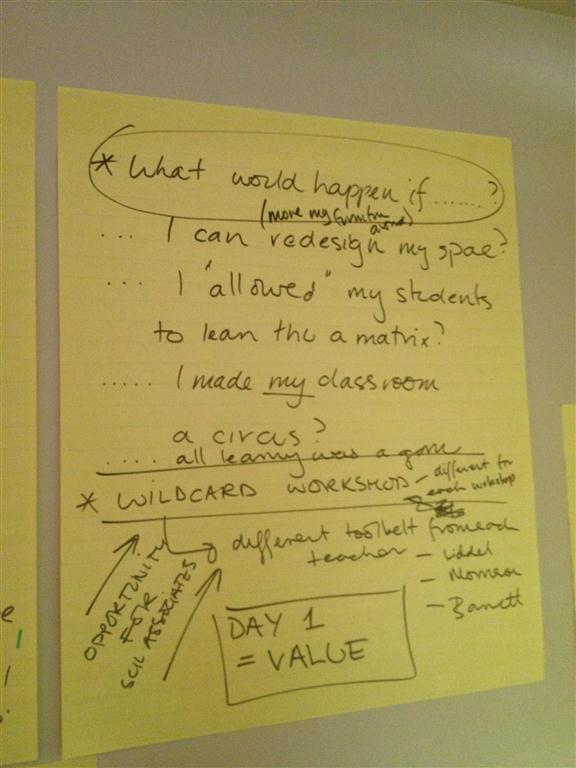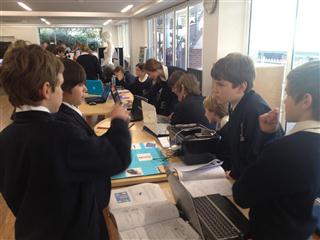Embedding Analytical Content in a Narrative Frame
A quick vignette!
A few minutes ago I noticed my colleague Ben Bridges sitting with some new Year 12 students just near our preschool. Fittingly, he appeared to be reading from a children's storybook. Intriguingly, the students appeared rapt.
The book, it turns out, embeds an exploration of complex numbers into a story. I googled it and found it exists in digital form here.
Our minds are hardwired to fit experiences and concepts into a narrative frame. I hadn't really understood this, or considered what this might mean for how we relate to abstract analytic thought and the manipulation of symbols, rules, etc, until I heard Jason Ohler talk about 'packaging analytic content in a narrative frame'.
Apart from that, this seemed to me to be an excellent example of a 'Campfire' configuration working really well.
The notion of a 'Campfire' is that of a special occasion: gathering together to hear a guru deliver words of wisdom. It is a configuration that is often stripped of its magic (rows of desks facing the tyrannic front of the classroom) and done to death. That doesn't mean it has no place. Apart from anything else it is a ritual that nurtures a sense of shared journey - perfect for establishing a community of practice. It goes without saying the guru is not necessarily the employed teacher.
Virtual campfires, delivered via TED.com or YouTube at the learner's convenience, will never provide a true replacement for the face to face version. For all our software upgrades, our hardware hasn't changed a bit.
Read more on Caves, Campfires and Watering Holes here.





























